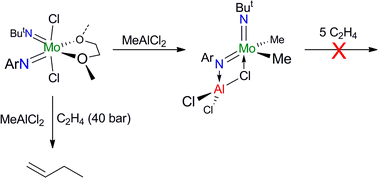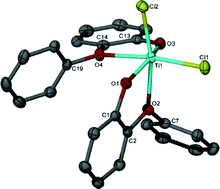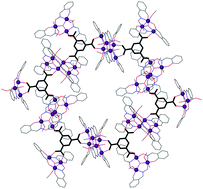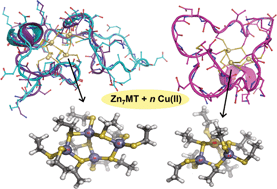Zinc alkyl complexes have an interesting role in a wide variety of stoichiometric and catalytic transformations and understanding how the ligands affect reactivity is important in understanding these structures and their reactivity. This Hot Article from Andrew Wheatley and Janusz Lewinski et al. details experiments involving the reactions of Et2Zn with a bicyclic guanidine.

Exposure of the produced complex (EtZn(hpp)) to undried air alters the composition depending on whether THF or CH2Cl2 is used as the solvent (displayed above). You can read the full details of the teams investigation by downloading their article below, which is free to access for 4 weeks.
Synthesis, structure and unique reactivity of the ethylzinc derivative of a bicyclic guanidine
Karolina Zelga, Michał Leszczyński, Iwona Justyniak, Arkadiusz Kornowicz, Maciej Cabaj, Andrew E. H. Wheatley and Janusz Lewiński
Dalton Trans., 2012, Advance Article
DOI: 10.1039/C2DT11959E













 Despite the fact that the catalytic activity of Cr and W imido complexes in ethylene dimerization processes has been studied by various authors, to date the analogous Mo catalysts have not been studied. In this HOT article, Dyer et al. set out to fill this gap in our knowledge and several molybdenum bis(imido) complexes were tested for ethylene dimerization catalysis in combination with EtAlCl2, showing moderate activity when bulky aryl substituents at the imido ligand are employed. In contrast, when MeAlCl2 is used the activity of the catalyst decreases considerably. To understand the role of the activator in these processes the authors have determined the molecular structures of several complexes derived of the reaction of bis(imido) molybdenum compounds with different aluminium halide reagents.
Despite the fact that the catalytic activity of Cr and W imido complexes in ethylene dimerization processes has been studied by various authors, to date the analogous Mo catalysts have not been studied. In this HOT article, Dyer et al. set out to fill this gap in our knowledge and several molybdenum bis(imido) complexes were tested for ethylene dimerization catalysis in combination with EtAlCl2, showing moderate activity when bulky aryl substituents at the imido ligand are employed. In contrast, when MeAlCl2 is used the activity of the catalyst decreases considerably. To understand the role of the activator in these processes the authors have determined the molecular structures of several complexes derived of the reaction of bis(imido) molybdenum compounds with different aluminium halide reagents. In this HOT article, several new Ti(IV) complexes bearing aryloxy or alkoxy ligands have been prepared and evaluated as catalysts for the oligomerization/polymerization of ethylene. Obviously, polyethylene is the major product but ethylene oligomers also result, ranging from dimers to higher oligomers. The results indicate a number of different active species are formed upon activation, with oligomers likely arising through a metallacyclic mechanism.
In this HOT article, several new Ti(IV) complexes bearing aryloxy or alkoxy ligands have been prepared and evaluated as catalysts for the oligomerization/polymerization of ethylene. Obviously, polyethylene is the major product but ethylene oligomers also result, ranging from dimers to higher oligomers. The results indicate a number of different active species are formed upon activation, with oligomers likely arising through a metallacyclic mechanism.




 K
K 

